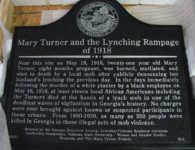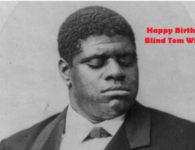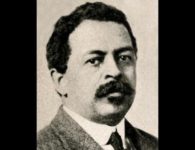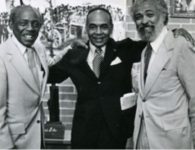The Tuskegee Normal and Industrial Institute, now Tuskegee University, was authorized by Alabama House Bill 165 and founded on July 4, 1881. Under the state’s system of rigid segregation, the school was intended to be a state-funded educational institution for Black students. The Alabama legislature appropriated $2000 for teacher salaries and established a board of commissioners to begin organizing the institution. As headmaster, the board chose Booker T. Washington, a 25-year-old African American graduate of the Hampton Normal Agricultural Institute.
Born into slavery in Virginia, Washington was a strong promoter of education, economic advancement, and personal responsibility among African Americans. He stressed the virtues of patience, enterprise, and thrift, and believed aggressive protests for equal rights were counter-productive. Much of Washington’s philosophy was reflected in the early Tuskegee curriculum, which emphasized skilled trades and religious study.
When classes began on September 19, 1881, Washington was the only teacher. He instructed the inaugural class of 30 students out of a one-room shanty near the Butler Chapel AME Zion Church. Under his leadership, the school’s enrollment swelled to more than 1500 students and accumulated an endowment of nearly $2 million. Washington successfully advocated for legislation to make Tuskegee independent of the State of Alabama and oversaw the construction of many campus buildings. Washington served as the head of Tuskegee Institute until his death in 1915.
Today, Tuskegee University continues to thrive as an historically black institution, now open to students of all backgrounds and boasting a student body of more than 3000. With property stretching across more than 5000 acres, Tuskegee University is the only college or university campus in the nation designated a National Historic Site.
Hosted by the late D’Army Bailey, Moments in Civil Rights History is produced in collaboration with the Equal Justice Initiative and is part of Comcast NBCUniversal’s “His Dream, Our Stories” project. Visit http://www.HisDreamOurStories.com for more Civil Rights History, first-hand accounts from those who led, participated in or benefited from the Movement, or to share a civil rights story of your own (or that of a loved one).
via Youtube Channel
source




















No comments